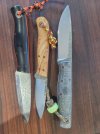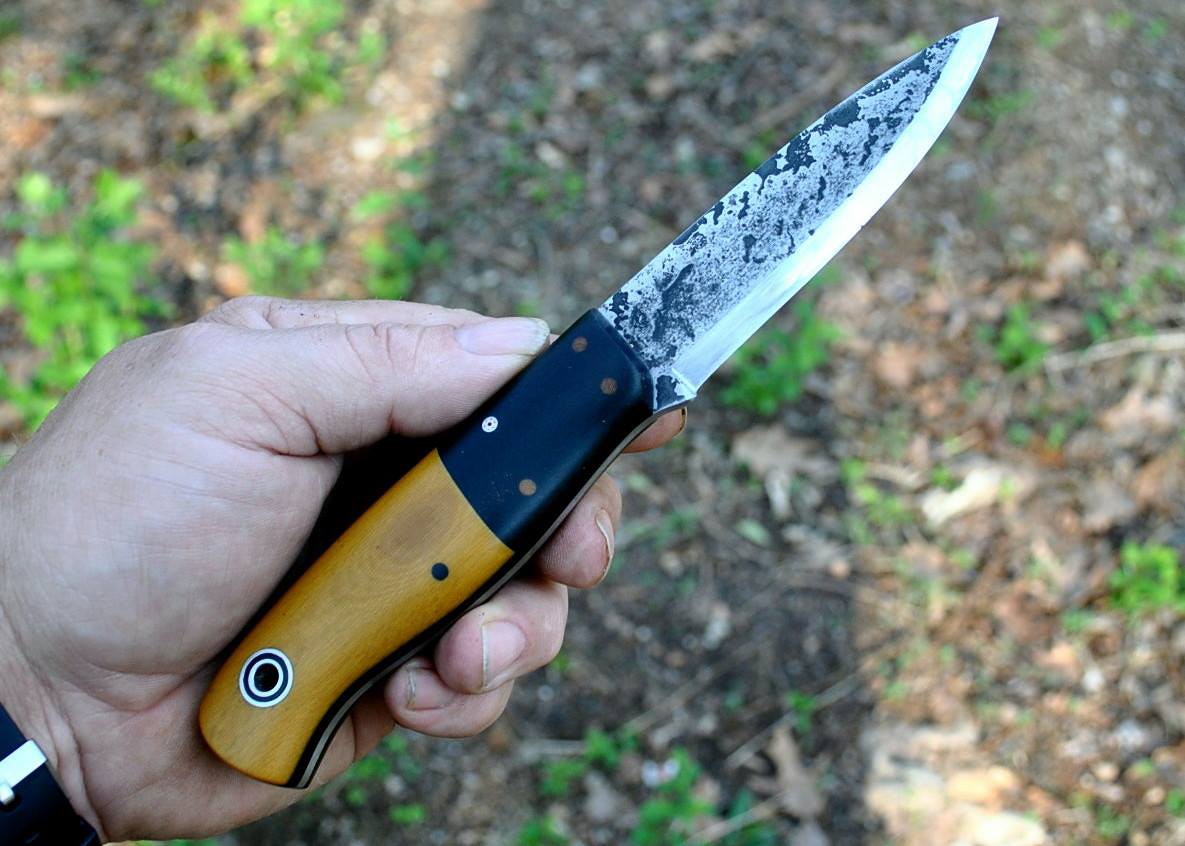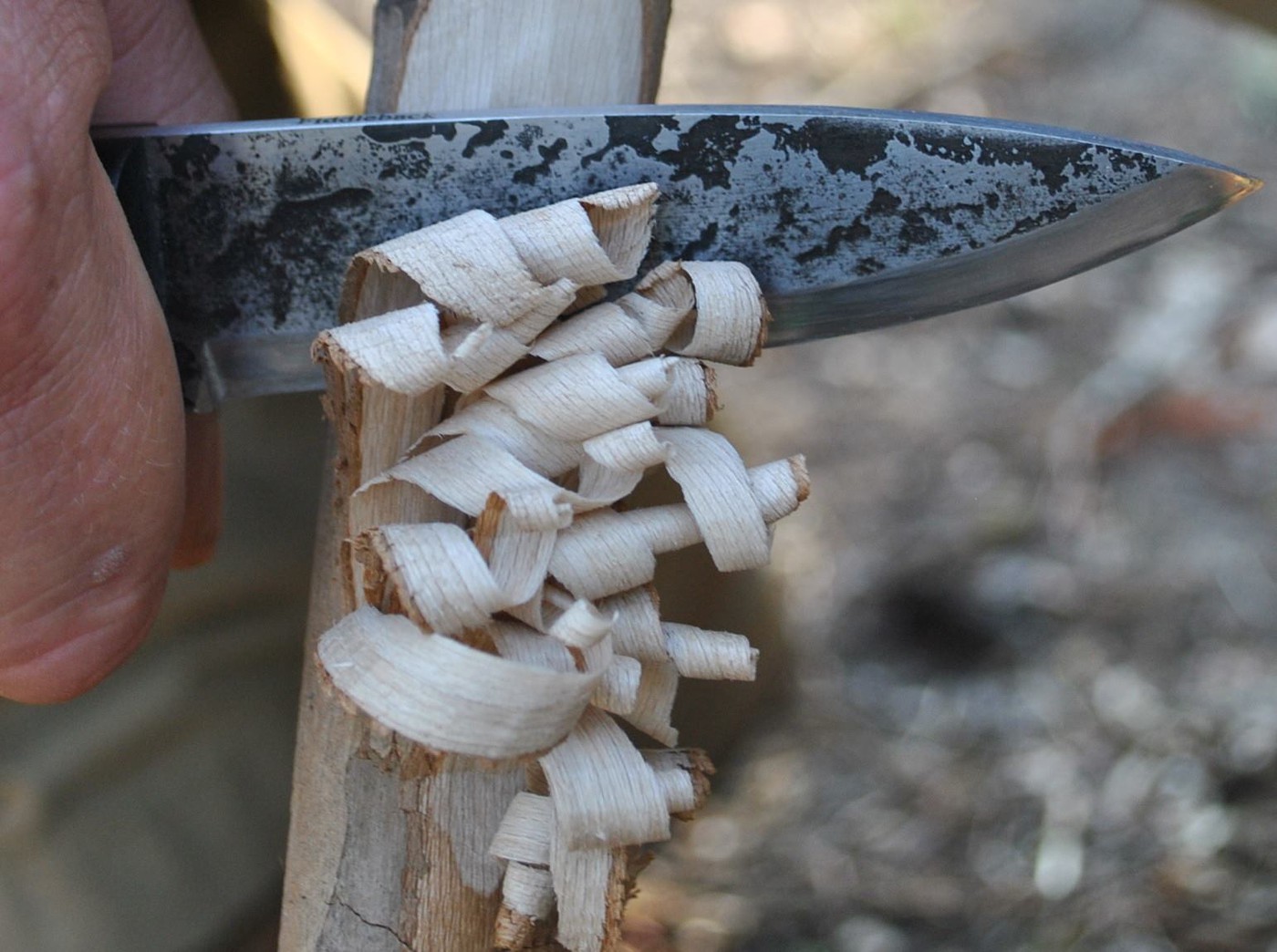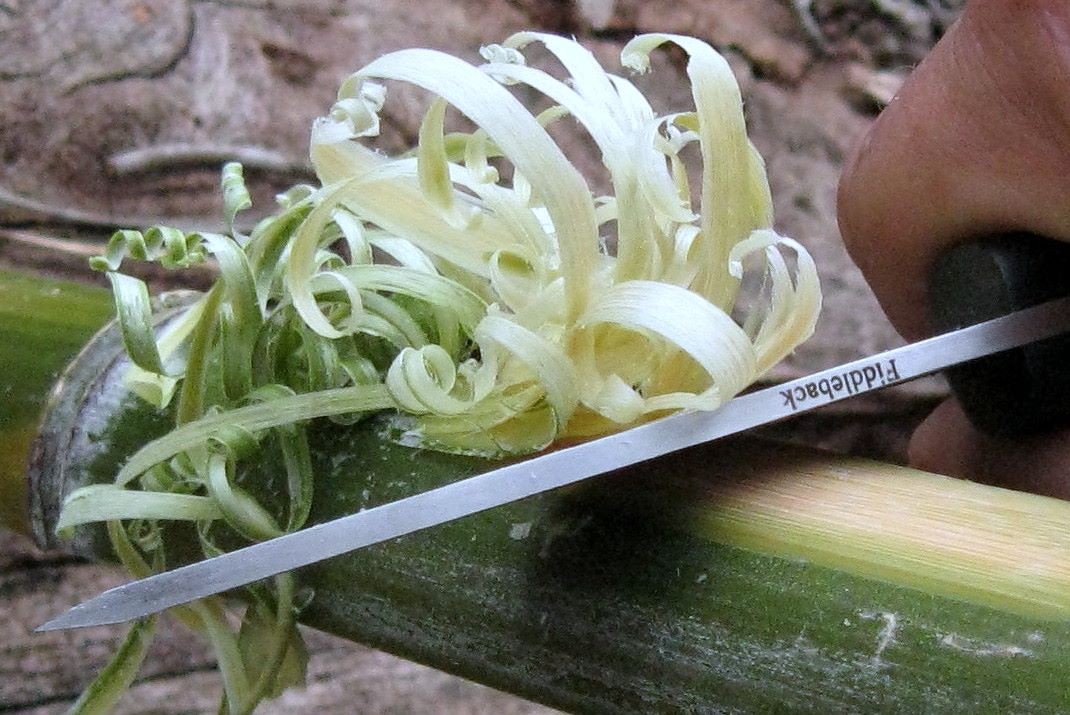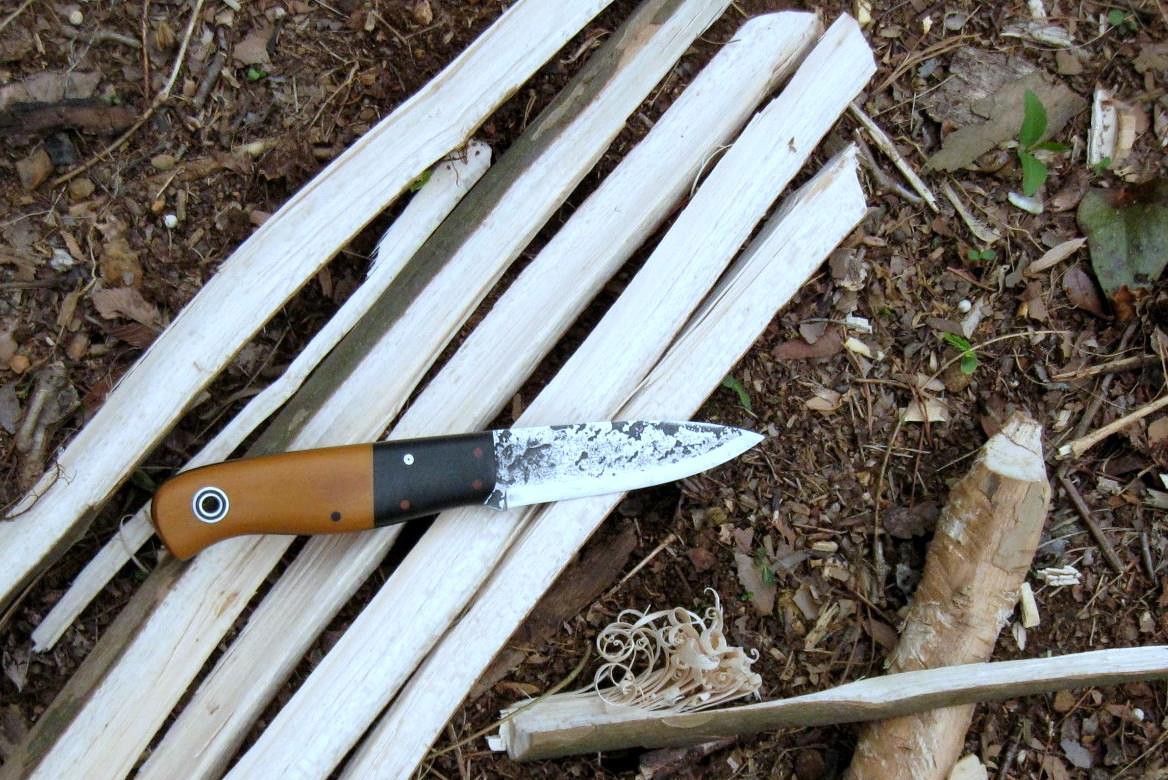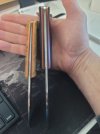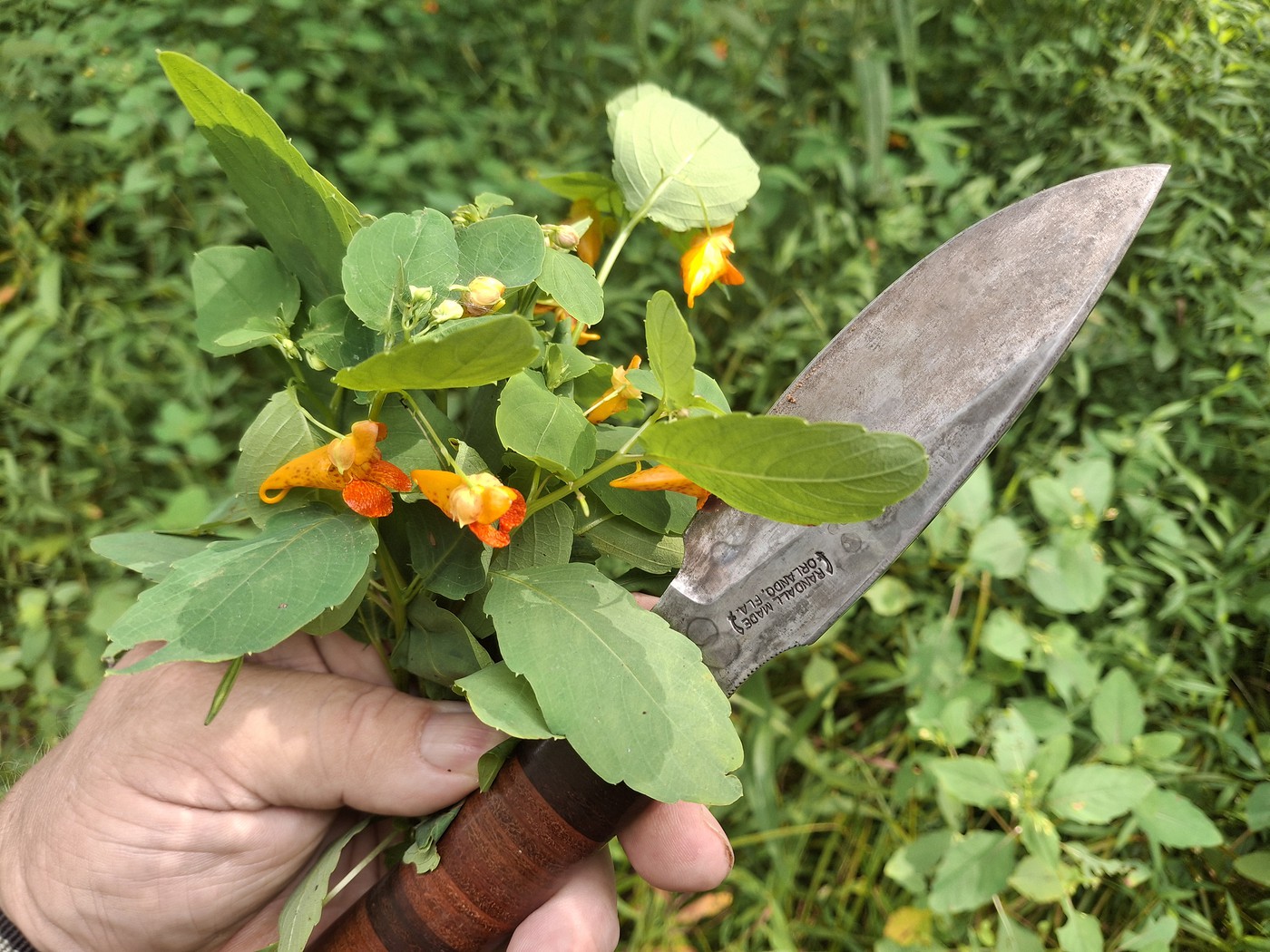Mistwalker
Gold Member
- Joined
- Dec 22, 2007
- Messages
- 19,076
I think I posted these images somewhere on the forum as part of a test and discussion on blade thickness about 10 years ago, but I never posted the review I had meant to post because... honestly I just didn't want to talk about the story behind that particular days adventure at the time, and that story was why I was so hard on the knife under such conditions.
Because this test was the product of me really needing something positive to do with the all the anger and energy I was feeling toward my business partner at the time, my own brother. With whom I parted ways 6 months later, after he screwed me out of my $75K investment and put my daughter's life at risk twice. I haven't spoken to him since the dissolution of the partnership, even though I drive by his house twice a day and see him at the grocery store a couple of times a month. For what it's worth, I told him I forgive him a while back, I just don't want to be around him or talk to him anymore., we just see the world too differently.
That's enough of that, just wanted to explain the anger I was feeling as I put this KE Bushie in 1/8 / 3mm A2 to the test of making a two-stick hearth board (a friction fire technique I had learned from my friend Rick Marchand
years before) , spindle, bearing block and bow using only this knife, my paracord bracelet, and what I could scrounge in a frozen forest with several inches of snow on the ground.
Rick Marchand
years before) , spindle, bearing block and bow using only this knife, my paracord bracelet, and what I could scrounge in a frozen forest with several inches of snow on the ground.

It started that morning with me finding a dead limb a little over 1 inch in diameter. I cut it into three pieces using a technique I call ring-and-break which abrades the edge quite a bit but produces clean ends easier than cleaning up fractured broken ends. I did a piece on that technique for the blog years ago. Two of the pieces were for the hearth board, and the other was for the spindle.
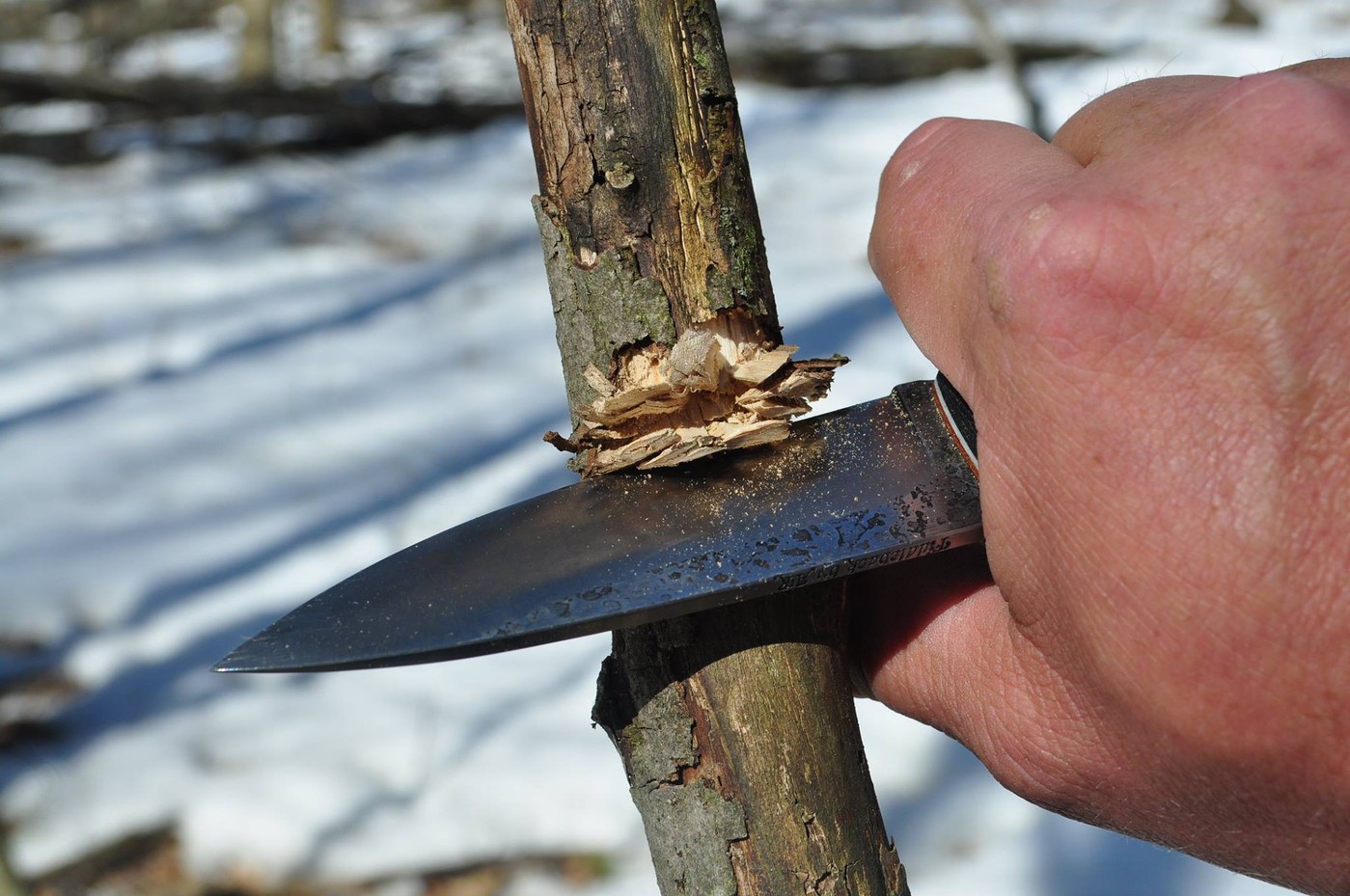
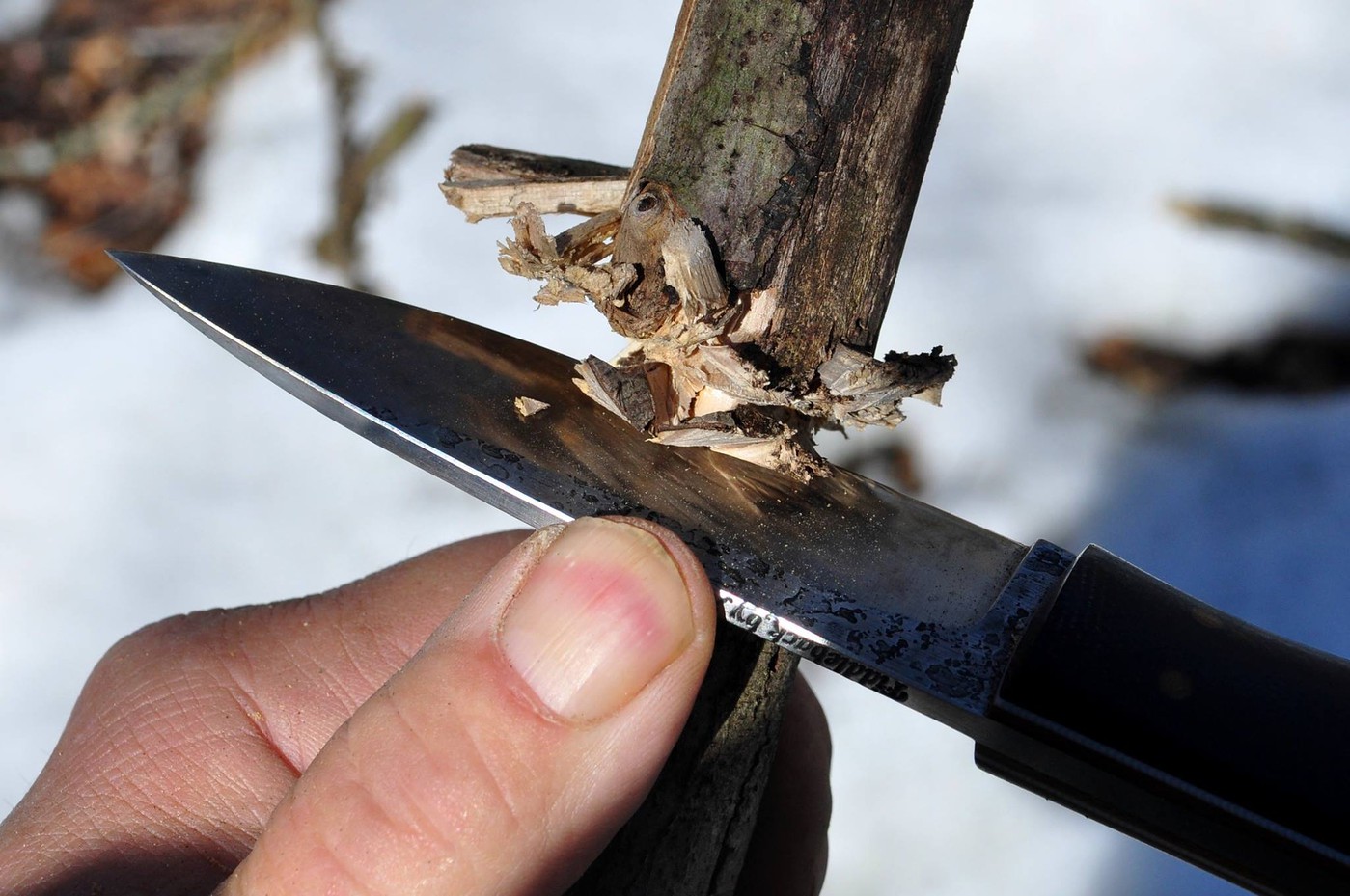
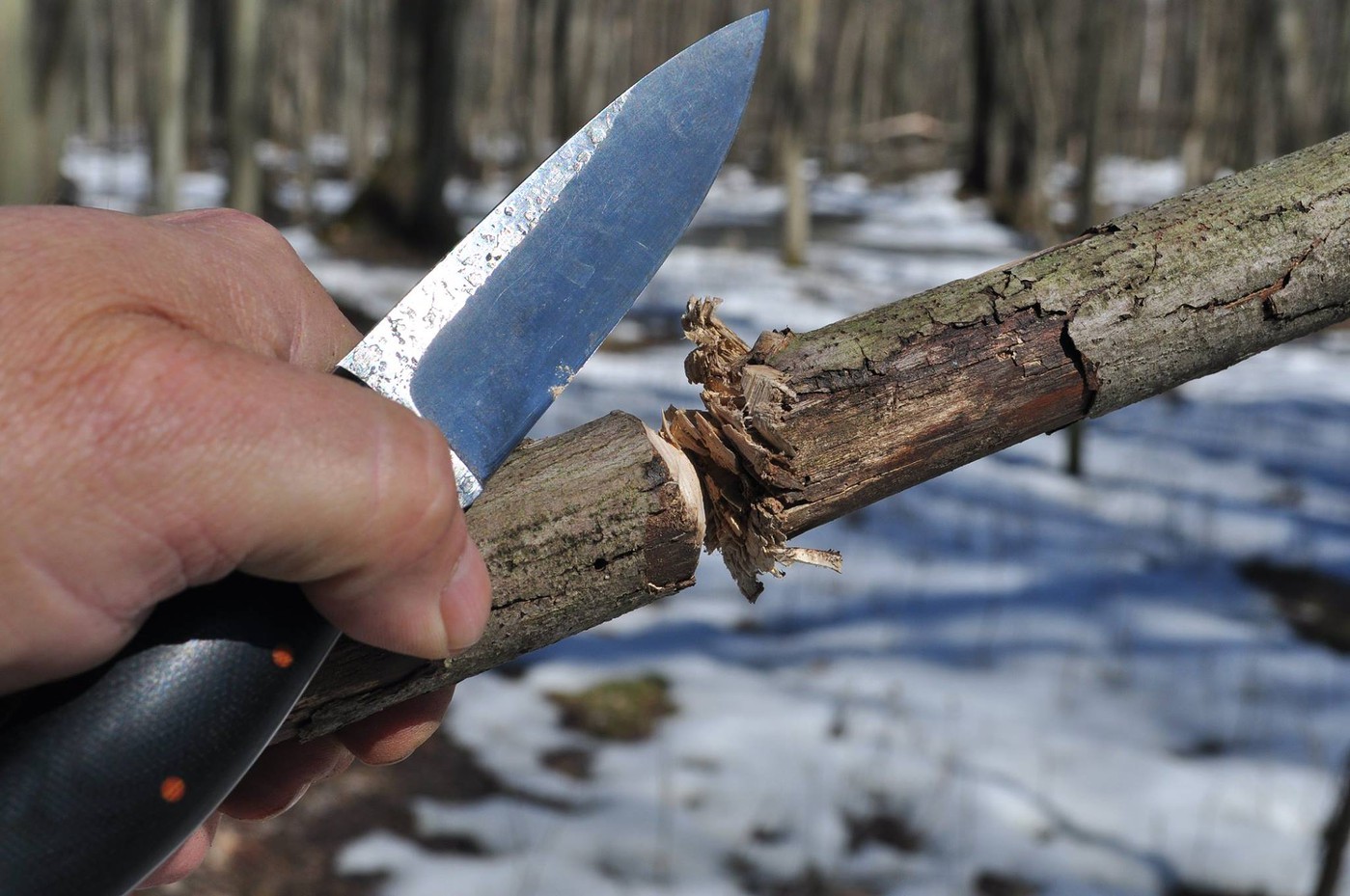
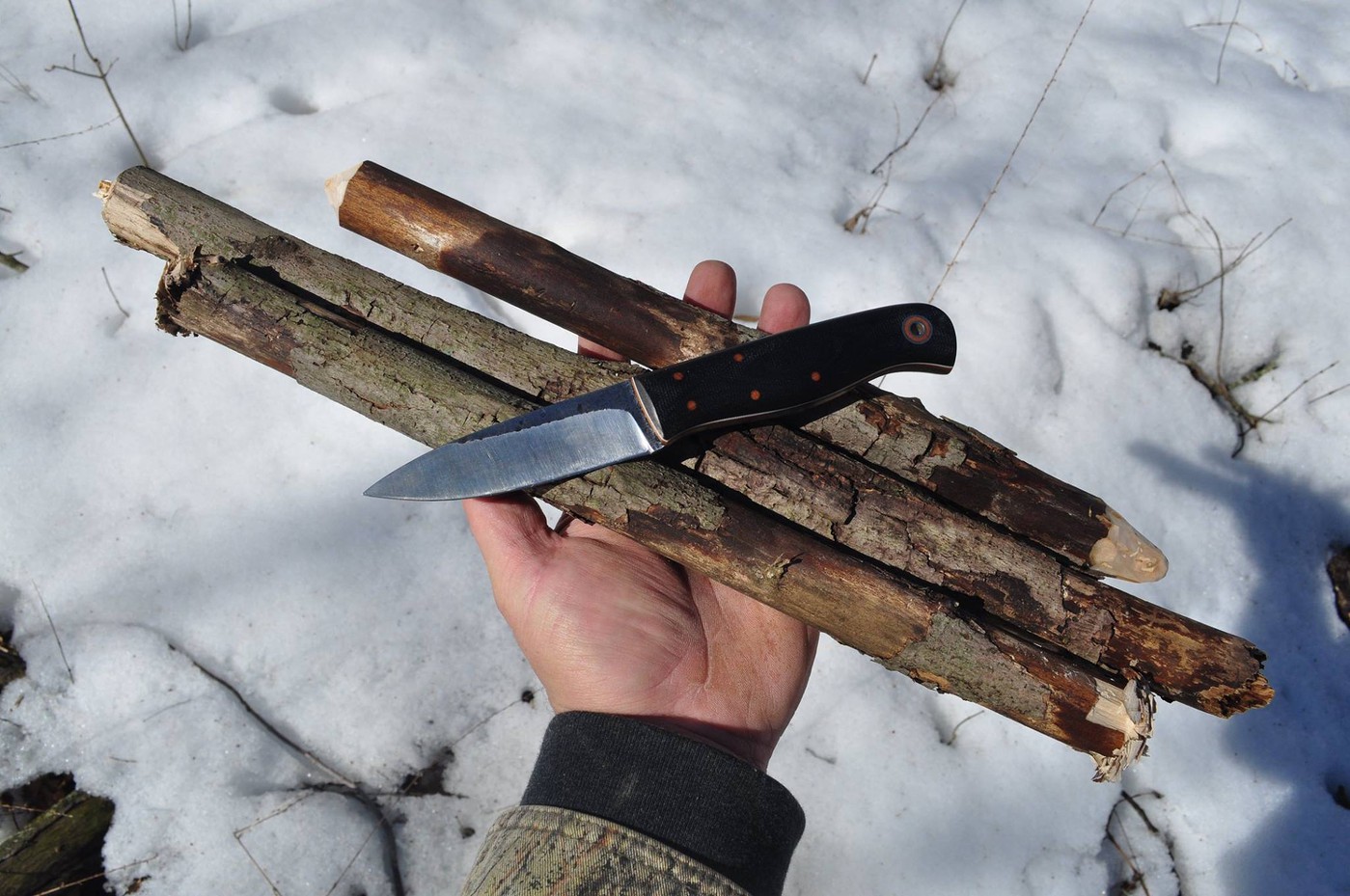
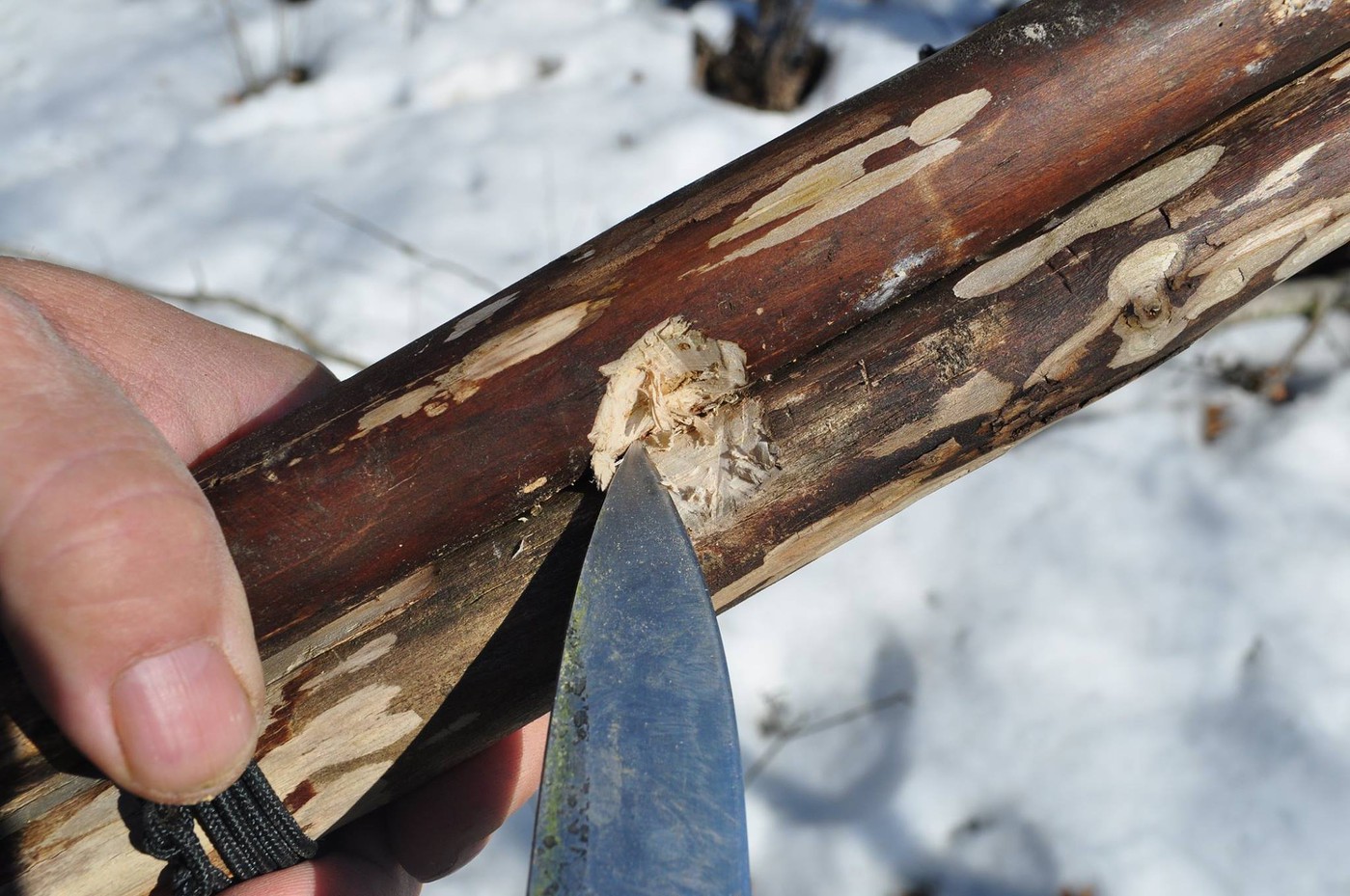
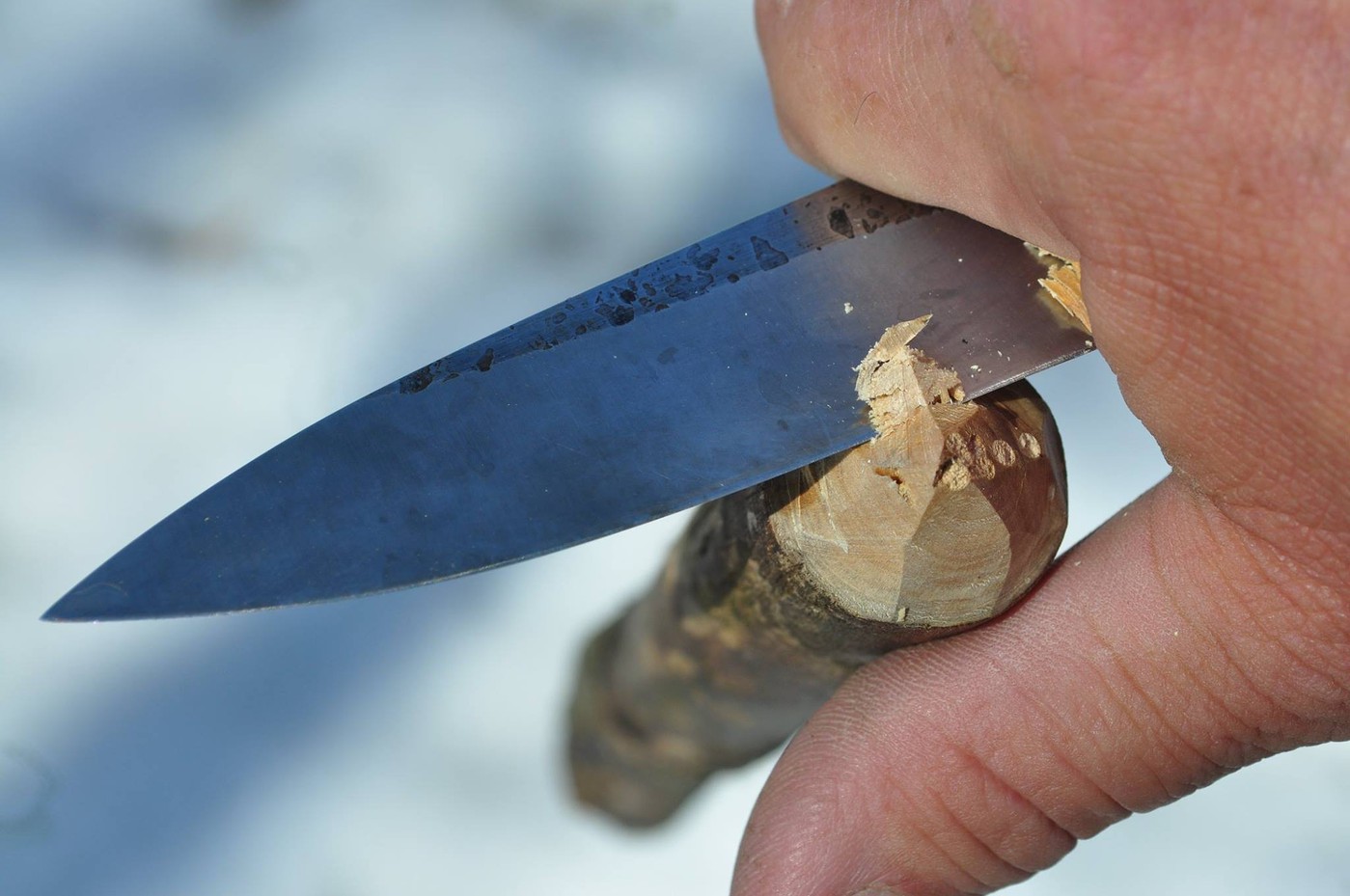
Then next came the bearing block which took a combination of batonning, whittling, and boring to make
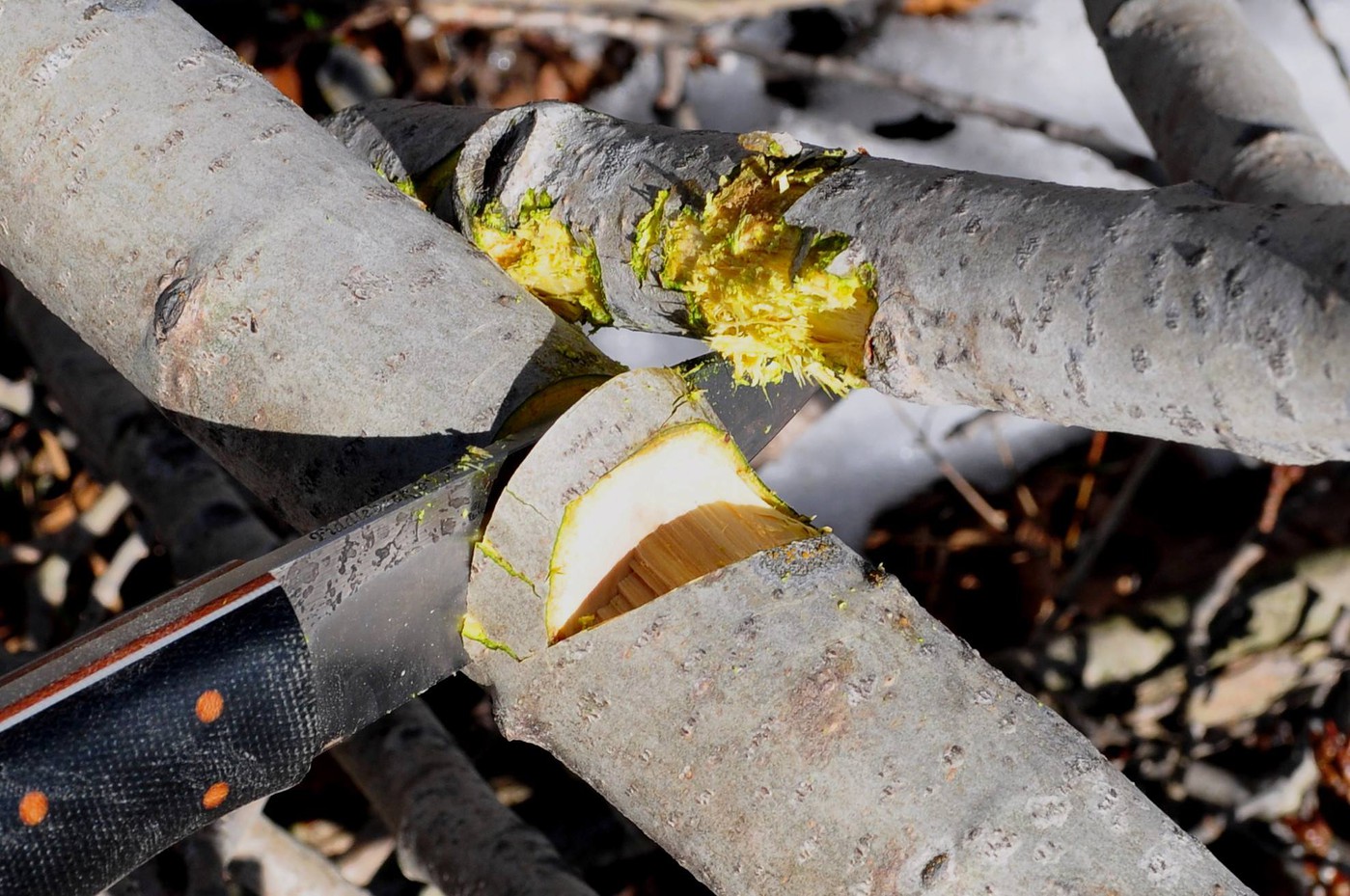
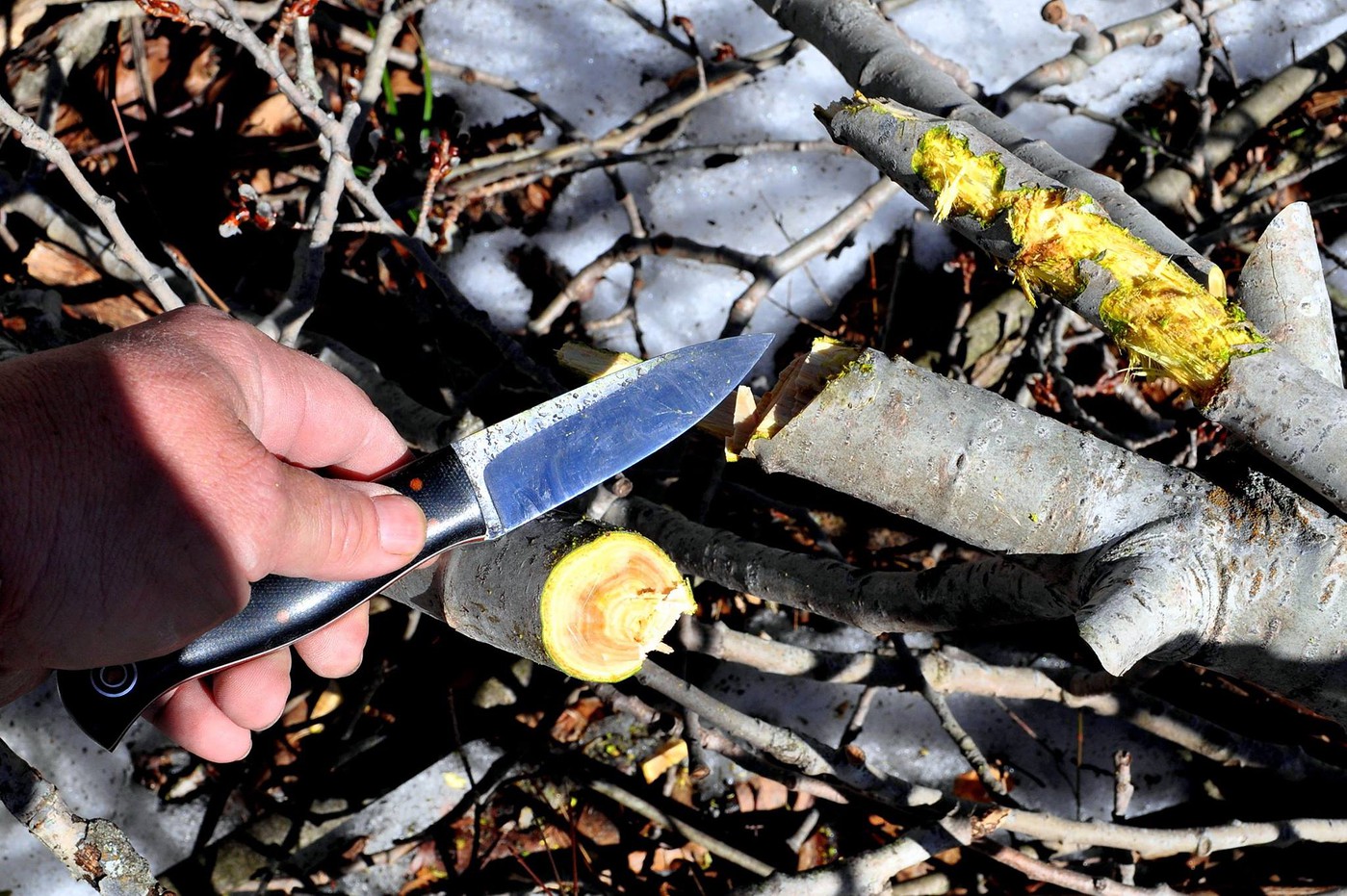
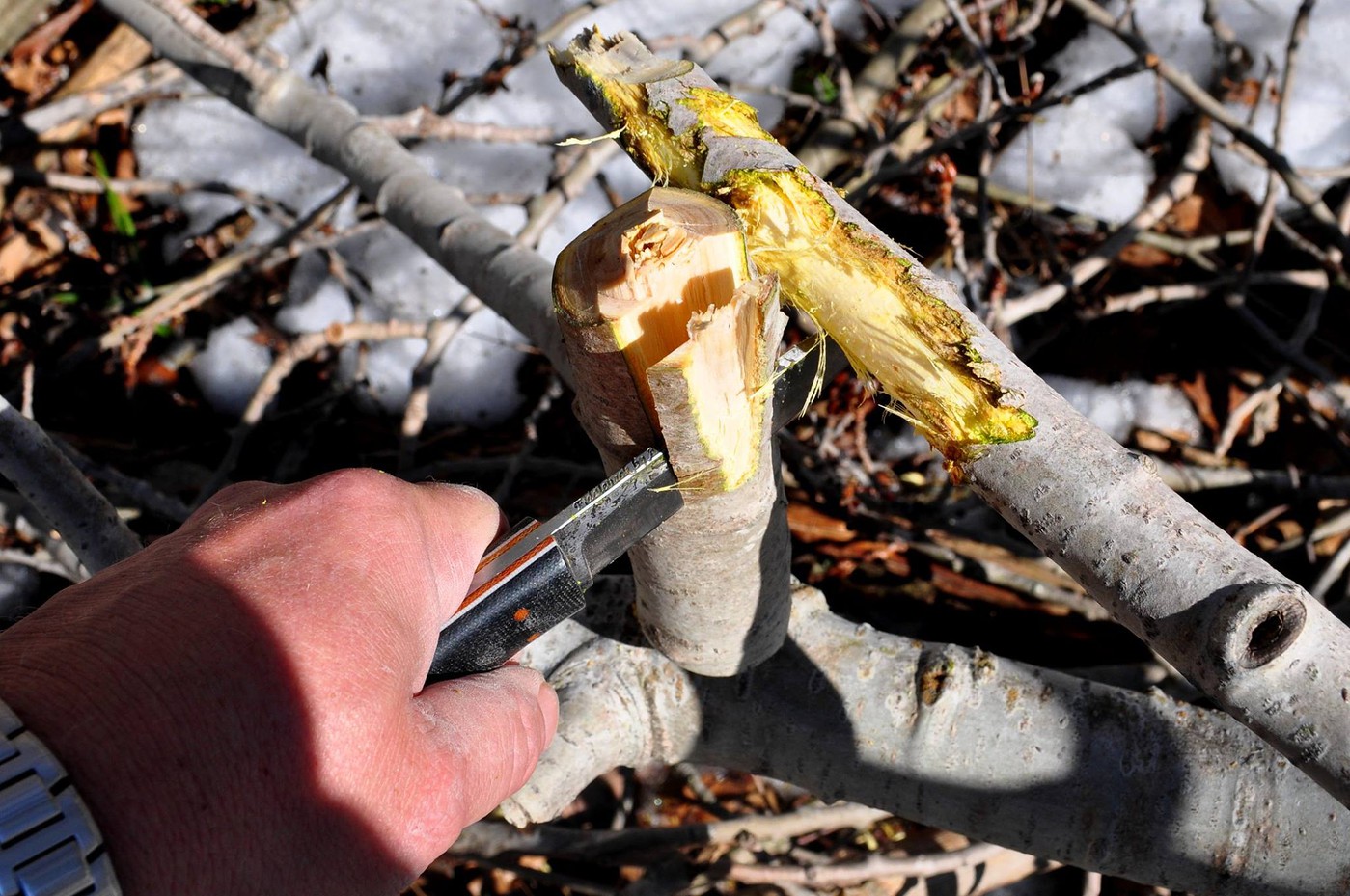
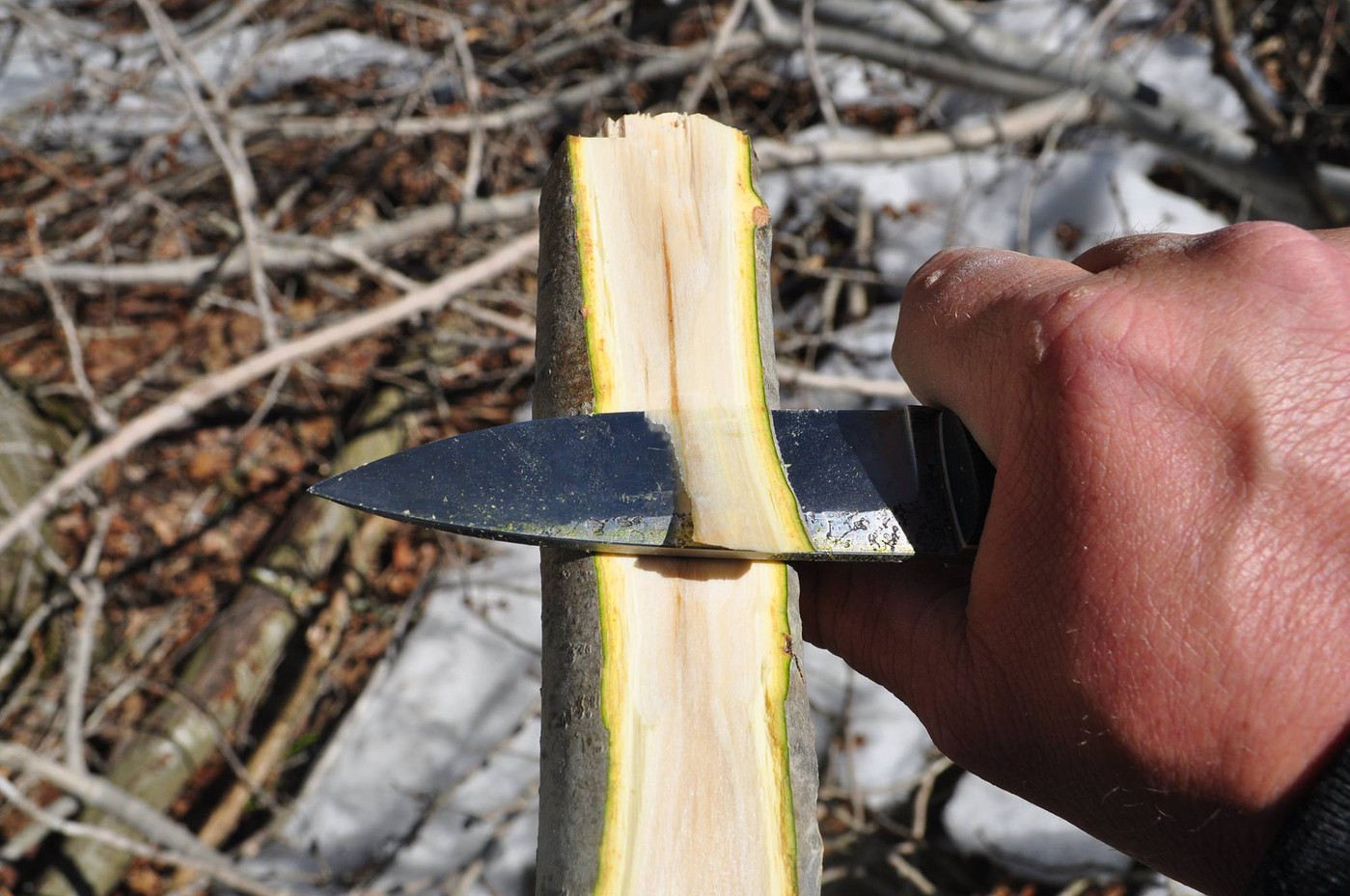
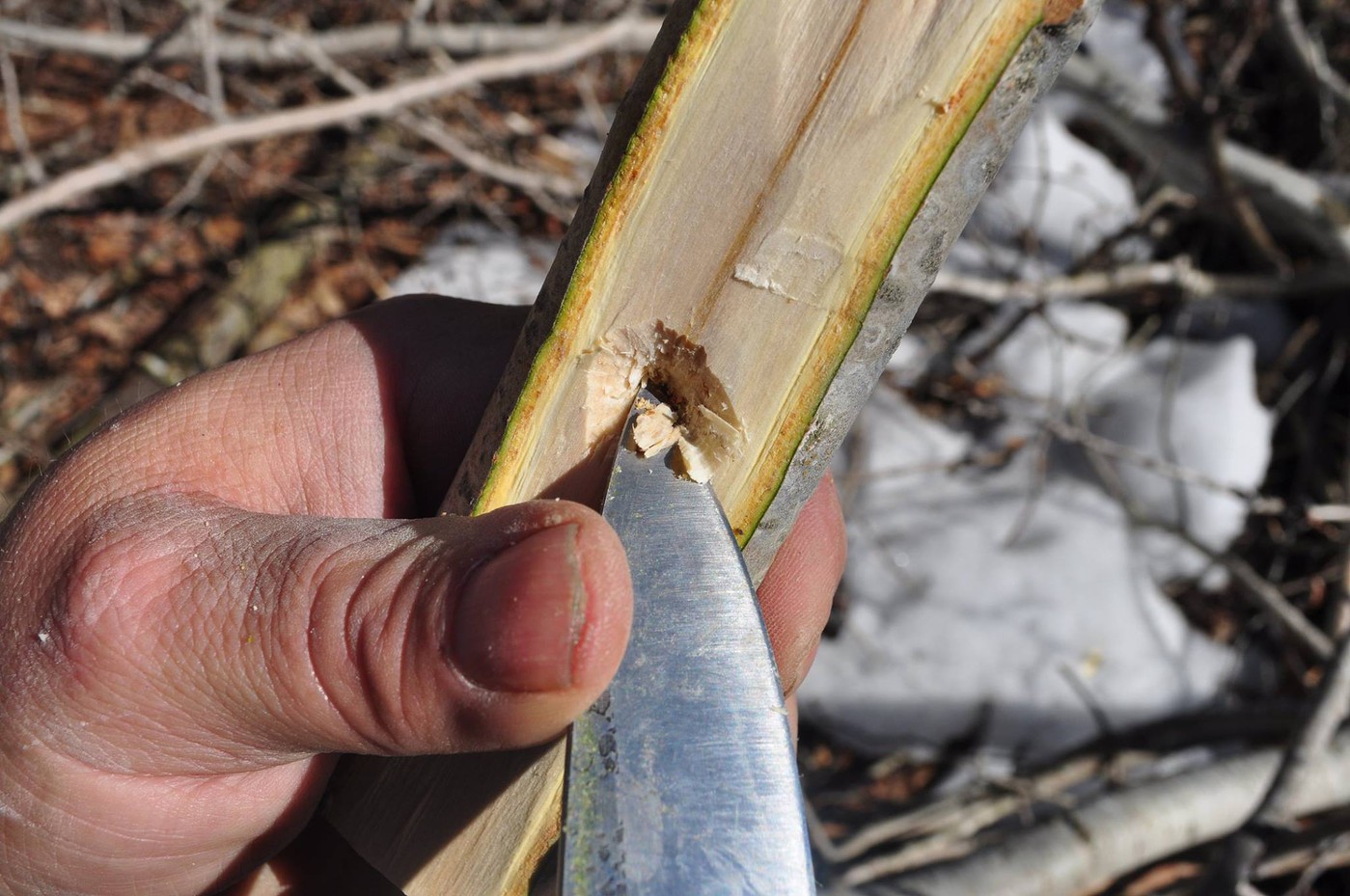
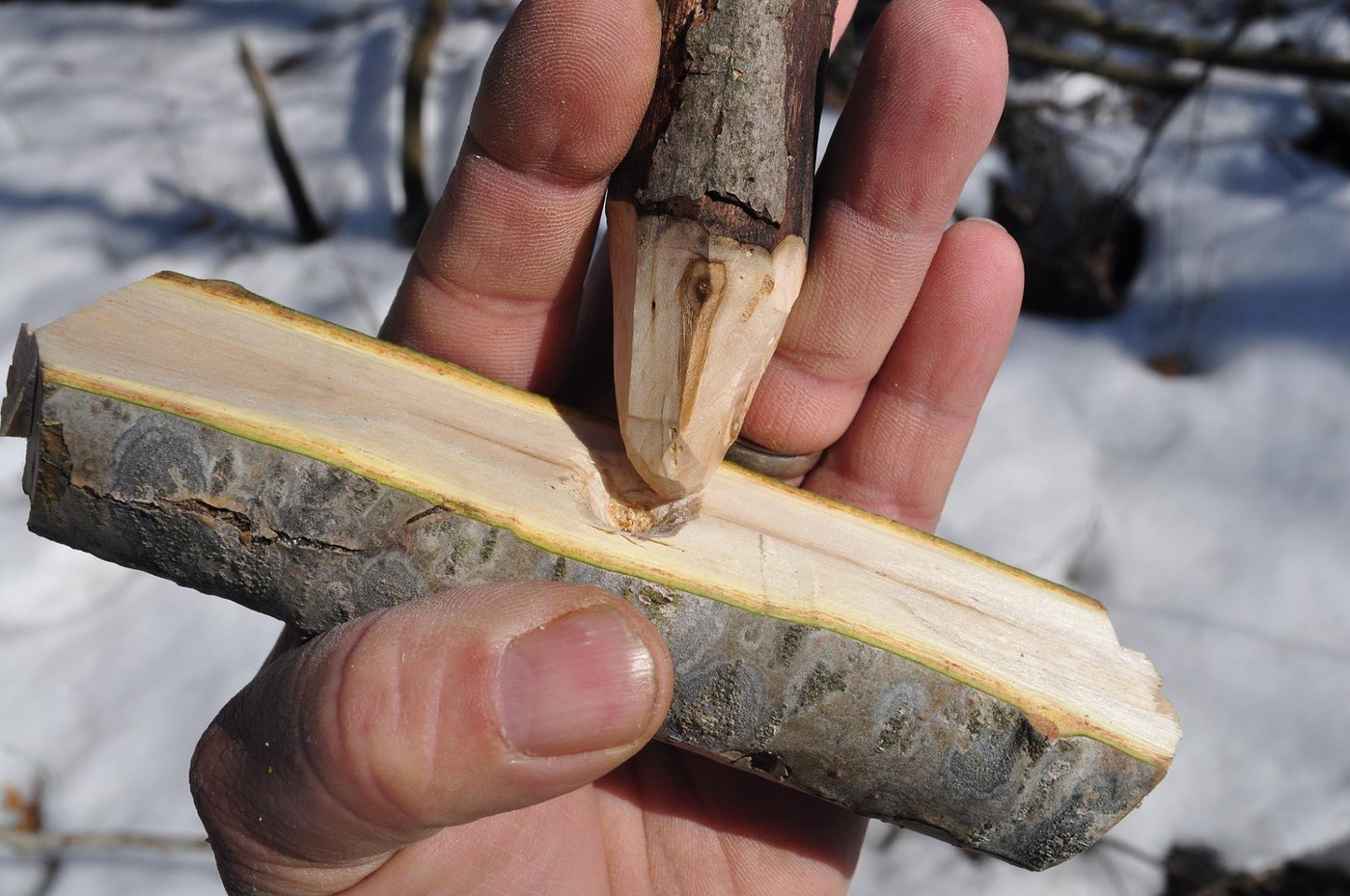
And then the bow was just a matter of finding a limb with a little natural curve to it
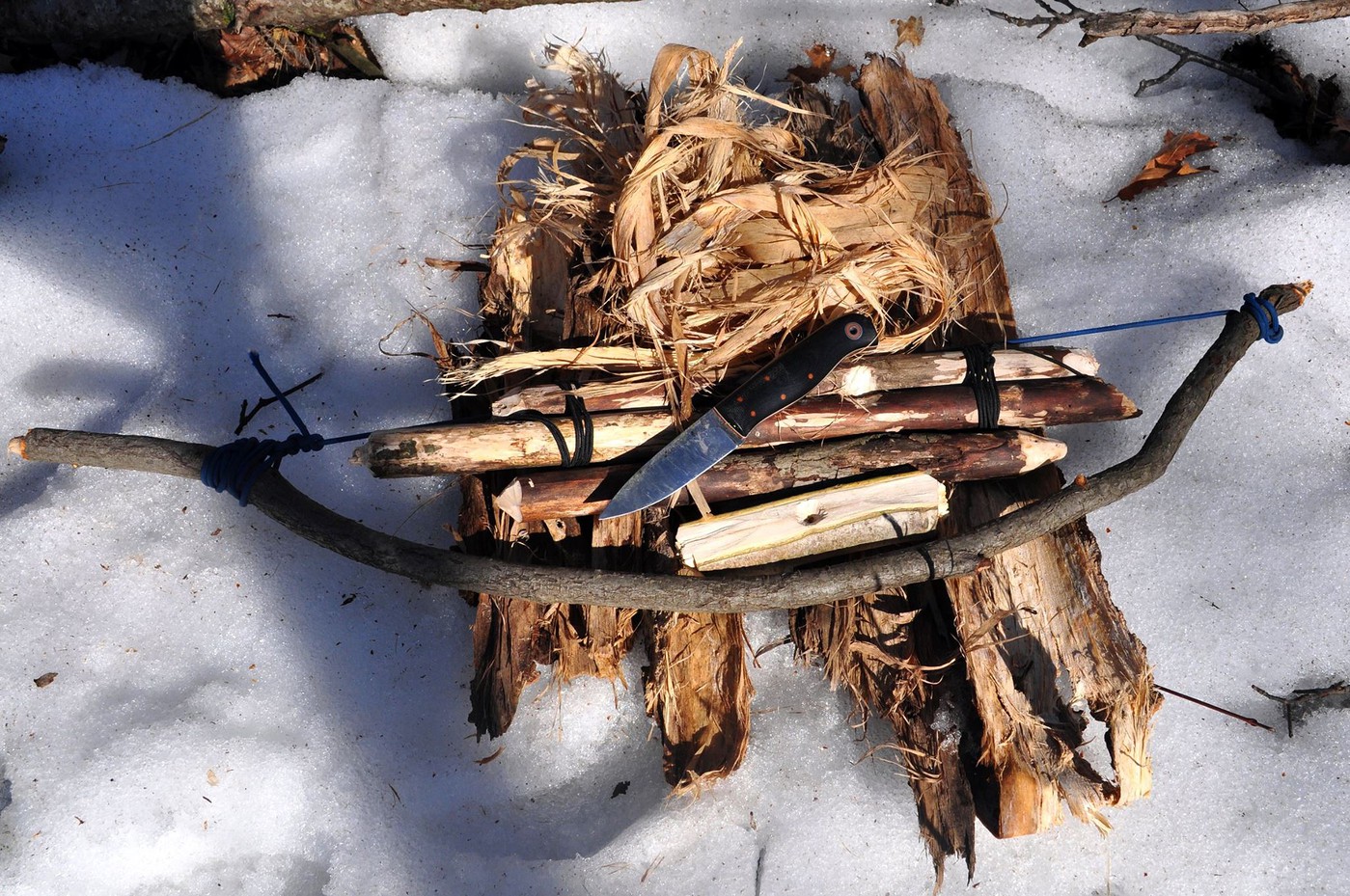
And now you know the story behind this picture in the "Just A Picture" thread
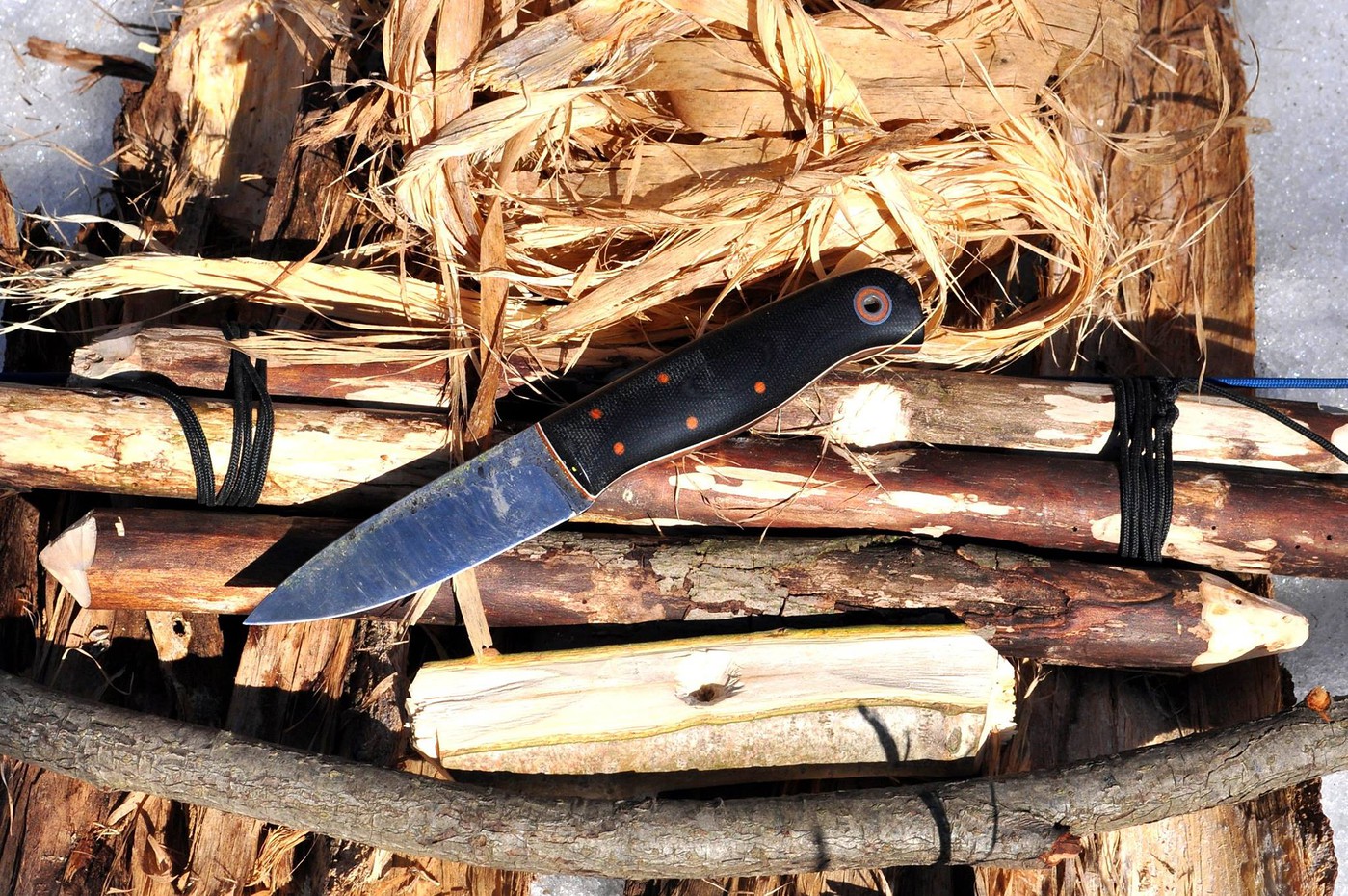
I didn't start a fire with it because it was late March and finally actually above freezing, in the mid 40s, that afternoon for the first time in over 3 months and the humidity was way to high for friction fire. Rick probably could have done it with his idling technique, but I had vented all my anger as was just ready to go home. However the time was still well spent because I learned several things. Among them are that thinner blades encounter less resistance when truncating than thicker ones and will bite deeper with the same amount of force or less (I never used any less force this day, if anything I used more at times). That a lighter weight knife could still be a very capable tool. That the quality of the knife largely comes down to the quality of the person making it, especially in regards to the heat treatment and handle attachment.
The tests that were done that day are the reason most of the knives I carry today are a lot thinner and lighter than they were previously, as I learned that being choosier about the people who make the knives I carry is much more important than being choosy about the blade thickness.
.
Because this test was the product of me really needing something positive to do with the all the anger and energy I was feeling toward my business partner at the time, my own brother. With whom I parted ways 6 months later, after he screwed me out of my $75K investment and put my daughter's life at risk twice. I haven't spoken to him since the dissolution of the partnership, even though I drive by his house twice a day and see him at the grocery store a couple of times a month. For what it's worth, I told him I forgive him a while back, I just don't want to be around him or talk to him anymore., we just see the world too differently.
That's enough of that, just wanted to explain the anger I was feeling as I put this KE Bushie in 1/8 / 3mm A2 to the test of making a two-stick hearth board (a friction fire technique I had learned from my friend

It started that morning with me finding a dead limb a little over 1 inch in diameter. I cut it into three pieces using a technique I call ring-and-break which abrades the edge quite a bit but produces clean ends easier than cleaning up fractured broken ends. I did a piece on that technique for the blog years ago. Two of the pieces were for the hearth board, and the other was for the spindle.






Then next came the bearing block which took a combination of batonning, whittling, and boring to make






And then the bow was just a matter of finding a limb with a little natural curve to it

And now you know the story behind this picture in the "Just A Picture" thread

I didn't start a fire with it because it was late March and finally actually above freezing, in the mid 40s, that afternoon for the first time in over 3 months and the humidity was way to high for friction fire. Rick probably could have done it with his idling technique, but I had vented all my anger as was just ready to go home. However the time was still well spent because I learned several things. Among them are that thinner blades encounter less resistance when truncating than thicker ones and will bite deeper with the same amount of force or less (I never used any less force this day, if anything I used more at times). That a lighter weight knife could still be a very capable tool. That the quality of the knife largely comes down to the quality of the person making it, especially in regards to the heat treatment and handle attachment.
The tests that were done that day are the reason most of the knives I carry today are a lot thinner and lighter than they were previously, as I learned that being choosier about the people who make the knives I carry is much more important than being choosy about the blade thickness.
.
Last edited:

